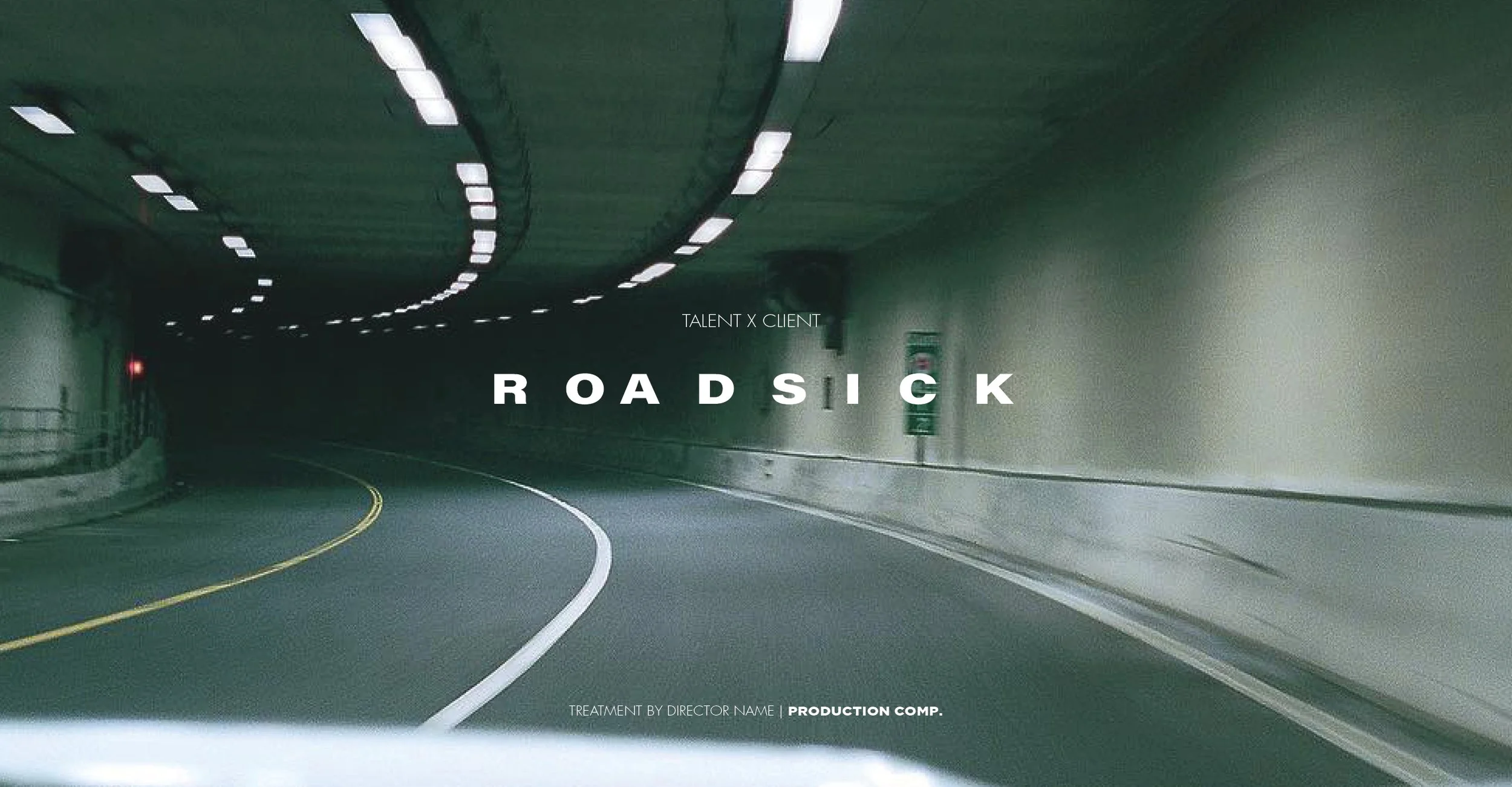What is a Treatment?
-Film treatment principles & techniques explained
In short, a treatment is a visual representation of what your film will look like. This could be any type of film.
Commercial
Feature Film
Short Film
Documentary
Music Video
Branded Content
Photography shoot
Etc.
There are so many ways to utilize a treatment within the creative process. Many directors and creatives use treatments in the pitching process, a process within the bidding of a job. IE commercial, branded content, or music video. But winning a project bid is just one aspect of why you would create a treatment for your film.
1. THE TREATMENT IS YOUR VISION
Think of the treatment as your voice. Your treatment should reflect what you have to say about the project OR your interpretation. Sometimes this looks like your interpretation of a piece of music or a creative brief from an agency.
Many directors and creatives skip over this step, go straight into the film's look, and fail to hone their specific vision for the project. But in a day and age where making beautiful images is becoming easier and cheaper, the thing that will make you stand out is your vision.
2. WHY YOU?
What is your take on this film that makes you stand out from the rest? Why are you the one that can make this project come alive? Your ideas and the ability to communicate your thoughts will help you win more treatment pitches.
3. KISS (Keep it simple stupid) - Michael Scott
When all else fails, keep your vision simple. If your treatment feels too complex or hard to understand, it's a good sign that you don't understand precisely what you want to do. Don't spend time throwing a million good ideas at a treatment, failing to give one simple GREAT idea. Find a through-line that glue's the piece together. This could be a type of camera movement or even a visual motif that is repeated throughout your story.
Basic techniques
1. A TREATMENT SHOULD TELL A VISUAL STORY
It's paramount that your treatment tells the story visually, from beat to beat. I like to imagine speaking this OUTLOUD to a friend who is vision impaired. You'll have to present these treatments on a call to an agency or client at the end of the process. Some people do not think visually, so make it clear and descriptive.
Example:
"We see a garage door opening from the first second—lighting beginning to spill in a late afternoon orange glow. We quickly whip pan, landing on a garage shelving stocked with the full product lineup. The products are Softly lit from overhead garage lighting, but as the garage door keeps opening, beautiful soft sunlight shafts onto the product on queue, like the heavens opening up to highlight the product on the shelves. The camera very slowly dolly's forward."
Some key takeaways for each beat of the story.
WHERE AM I?
WHAT AM I SEEING?
WHAT DOES IT FEEL LIKE (LIGHTING)
WHAT IS THE CAMERA DOING? (MOVEMENT)
2. ACCOMPANY YOUR STORY WITH PRECISE VISUALS
One of the biggest things that separate you from anyone else is the ability to precisely accompany your story with visuals. Not just aesthetic visuals, but visuals that give an extremely close representation of what the audience will be seeing in the story.
Ask yourself– What am I reading? and what am I seeing? As much as possible, show the reader what your world will look like.
Don't be afraid to edit your images!
One thing that I've found is the importance of editing the images I curate for a treatment. Give all your images the same tone or contrast. Make them feel like one cohesive collection of visuals. The idea is to let the images feel like you've already made the piece for them.
GREAT SOURCES FOR REFERENCE IMAGERY:
Frameset.app
Kive.ai
Shotdeck.com
Tagi.tv
Unsplashed
3.BE BOLD
It sounds obvious at first. But so many times in the pitching process, we forget that our voice is the reason we're here at all. Often, I end up softening my approach out of fear of not winning the pitch. The more I write and pitch, the more I realize that boldness is always the right move. As a disclaimer, this doesn't mean being outlandish in your ideas or changing the agency's creativity completely. But often, once I believe in my own vision for the project, small things change about the creative that actually enhances the original idea they came up with.
They are coming to you for a strong voice, and you have it. Believe in yourself, and be bold with your idea. At the end of the day, you have the expertise, and you must communicate your belief in your vision.
WHAT IS A TREATMENT?
I hope we've helped get you started in the treatment process. There's a lot more to come with more practical examples of how to make a winning treatment. We created Good Treatments to help you focus on the story and less on the design. So make sure to check out the library of Pre-made treatment designs from the shop and find one that works for your next project.


















